Activate Object Data to Drive Deeper Reach and More Personalized Engagement with MoEngage
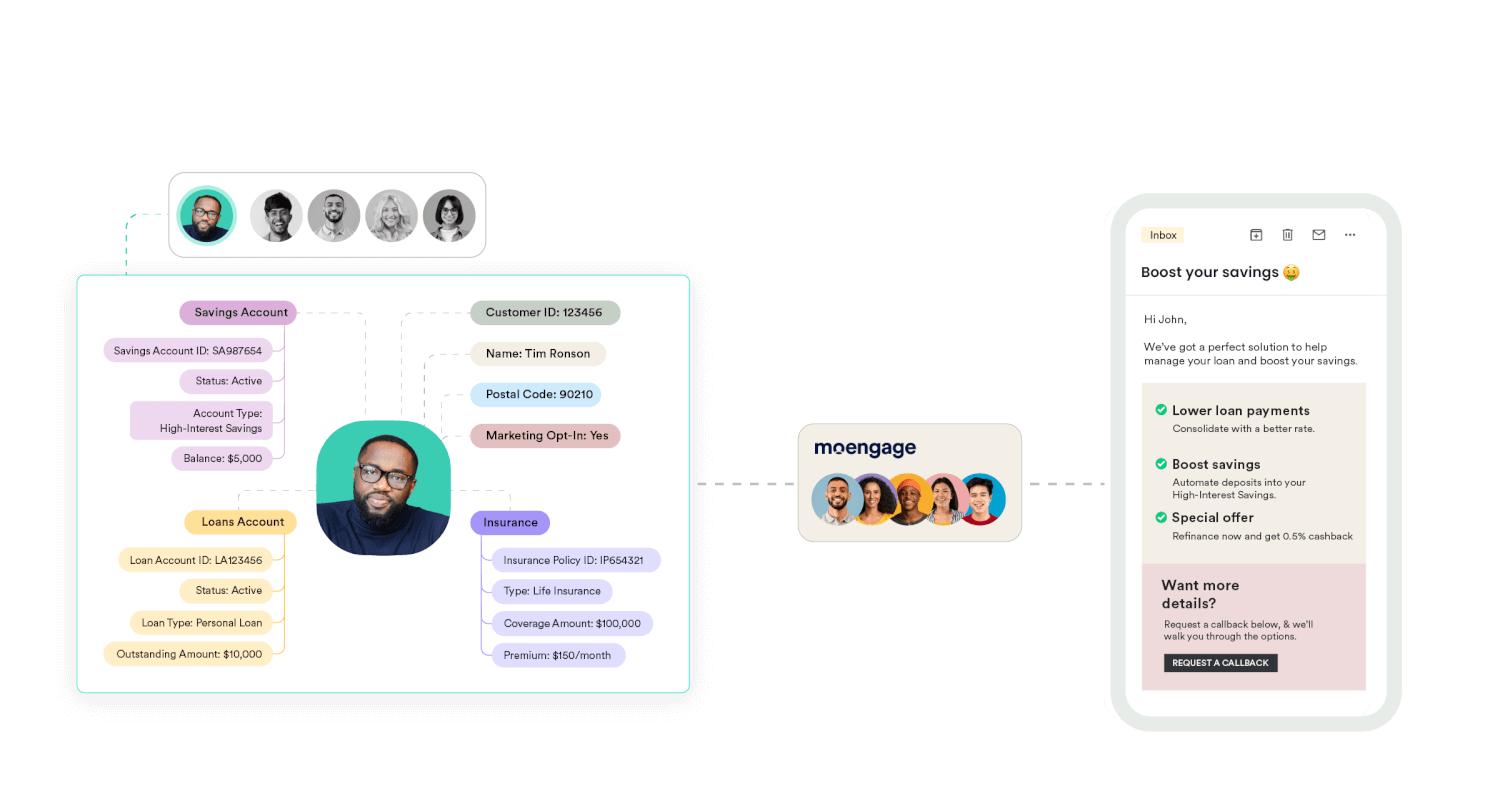
Reading Time: 5 minutes
In today’s digital world, customer data isn’t just getting bigger—it’s becoming more complex and layered. Brands capture information beyond fundamental interactions; each data point can hold a treasure trove of insights. Take a purchase, for instance: it’s not only about the items in a customer’s cart; each item comes with unique attributes that tell a richer story about the customer’s preferences and behavior.
To tap into this valuable, nested data, brands are turning to advanced data structures that make it easier to store and utilize complex information across various platforms, such as Customer Data Platforms (CDP) and data warehouses. By leveraging these structures, brands can achieve better organization and visibility of interconnected data, allowing them to activate this information for various purposes.
One of the most effective data structures brands are using is Object Data
Before we explore how brands use this powerful data type, let’s take a moment to understand what Object data is and how it works through a relatable example.
What is Object Data?
Object Data is a flexible data type that organizes information as key-value pairs. It means you can create a set of attributes that describe another attribute. In simpler terms, when you define a custom attribute as an object, you can include additional details that provide a deeper understanding of that object.
Let’s say we have a pet products brand that offers various pet pedigree options. This brand would maintain customer profiles with standard details like name, demographics, and contact information. However, they would also analyze information about each customer’s pets, which could vary widely. Each pet can have unique attributes, such as species, age, breed, and favorite treats.
This pet-related information can be neatly organized under a single attribute called ‘Pets,’ categorized as an Object type. Inside this ‘Pets’ object, you can store multiple attributes—’species,’ ‘age,’ ‘breed,’ and ‘treats’—all in one cohesive structure, as shown in the image below.
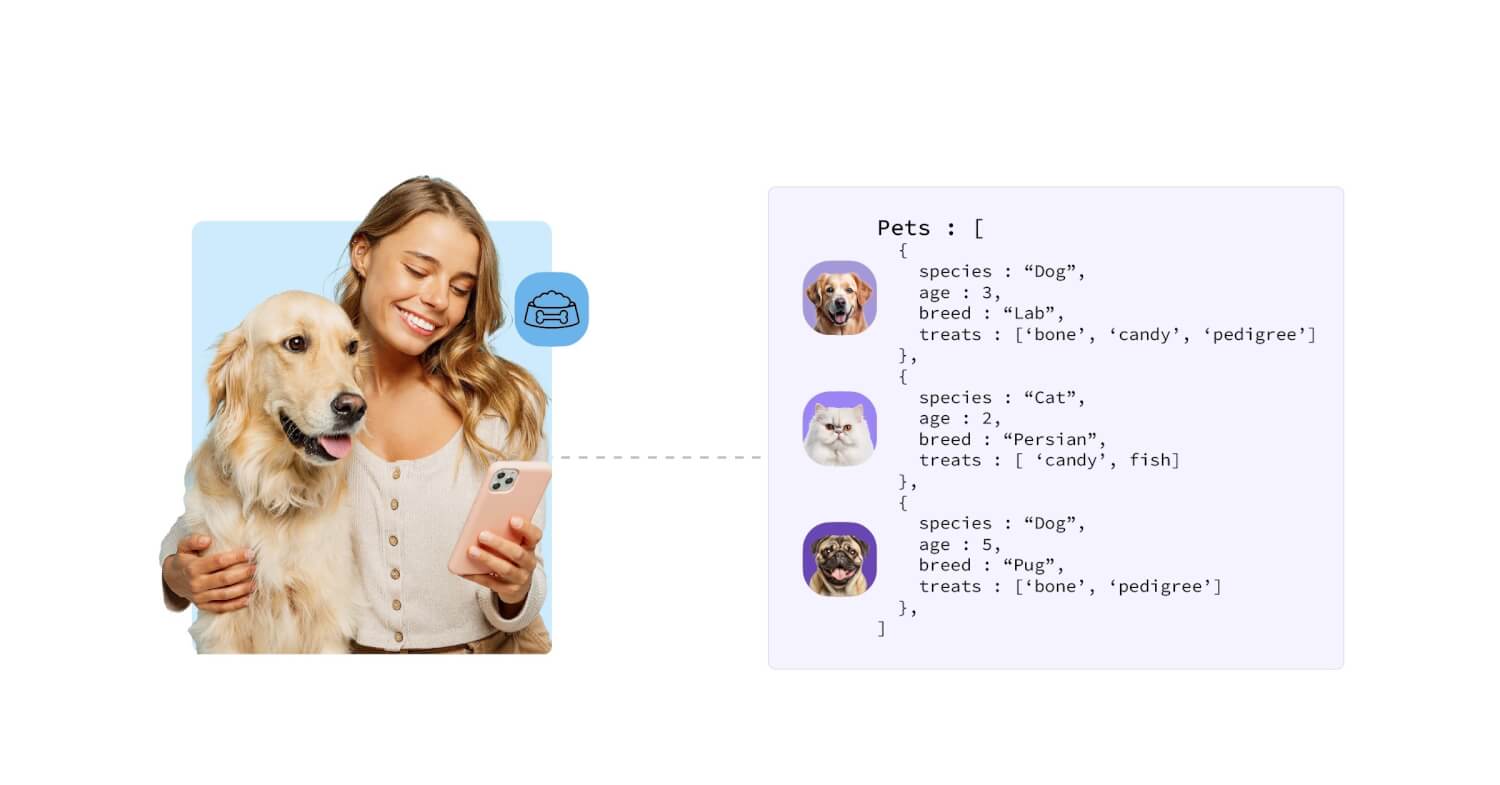
Brands increasingly use Object data to store and work with complex information across their systems. They rely on this data to feed into their CEP platforms, like MoEngage, to create meaningful customer segments and deliver personalized experiences. However, significant challenges can arise when the platform doesn’t support object data.
Challenges Brands Face Today
With the growing expectation that CEP tools should support Object data, the lack of this capability creates several obstacles for brands:
- Manual Efforts to Transform Object Data into Simpler Formats
A common challenge is the manual transformation of Object data into more straightforward, simpler formats. Brands must break down complex, interrelated attributes into separate, flat ones to pass this data into their CEP platforms. For example, rather than storing an object like “item,” which may have attributes such as “color,” “size,” and “brand” nested within it, brands have to transform these into standalone attributes like “item-color,” “item-size,” and “item-brand.”
This process requires additional time and effort and leads to a bloated data structure with redundant attributes, complicating data management and making it more challenging to maintain consistency across the tech stack.
- Inability to Get a Consolidated View of Interrelated Data
Fragmenting Object data into rudimentary attributes results in a disjointed and incomplete view of customer or event data. For instance, when a brand captures data on a customer’s pet, characteristics like “pet type,” “pet age,” and “pet gender” may be broken down into individual points, making it hard to maintain a holistic view of the pet profile.
This disjointed approach affects the accuracy and depth of insights, as brands can’t easily access a unified view of how these attributes relate. Without this consolidated view, understanding customer behavior becomes fragmented, making it challenging to drive meaningful engagement strategies.
- Complex Querying of Fragmented Data with Numerous Attributes
With data spread across multiple attributes, querying becomes significantly more challenging. Brands must create complex queries to activate this data, which slows down the analysis process and raises the risk of errors. Moreover, this fragmented approach restricts the depth of captured and utilized data, making it difficult to handle more advanced use cases or deliver personalized engagement effectively at scale.
MoEngage Support Object Data
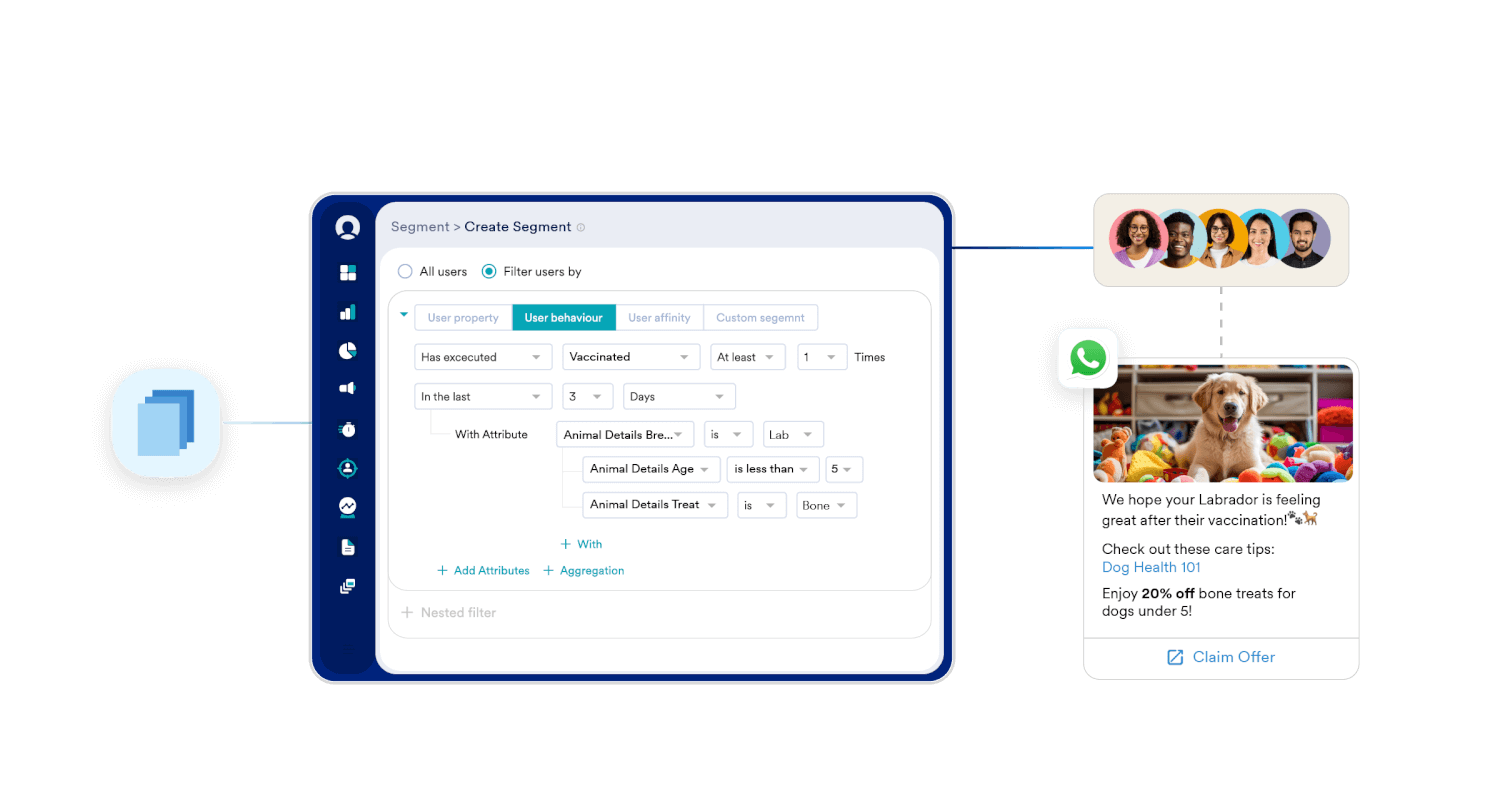
MoEngage enables seamless ingestion, storage, and activation of Object data, allowing brands to bypass the challenges previously mentioned and leverage this rich data for impactful engagement.
What This Means for Brands:
- Streamlined Ingestion and Storage: With MoEngage’s support for Object Data, brands can easily integrate this data into the platform. It leads to a smoother data flow, eliminating the need for manual transformations and reducing the chances of errors. Brands can effortlessly collect and store nested data, helping maintain the integrity and richness of the information.
- Unified Customer View: Brands can view nested attributes under Object Data together, providing a consolidated view of customer data. This unified perspective enables clear understanding, facilitates quicker insights, and empowers brands to make informed decisions. With all relevant attributes integrated, brands can quickly identify patterns and trends, allowing them to tailor their engagement strategies effectively.
- Easy Activation of Object Data: MoEngage simplifies the activation of Object Data, enabling brands to leverage it for deeper targeting and more personalized engagement. Brands can run advanced segmentation queries on nested attributes and use these details for highly tailored campaigns that resonate with individual preferences, driving engagement and loyalty.
How brands can activate Object Data across industries
E-commerce:
An E-commerce brand tracks items added to the cart, including their attributes, as ‘Object’ data. They can create a targeted audience of customers who have added apparel items to their carts with a total value exceeding $200 and extend personalized discount offers to them to drive conversion.
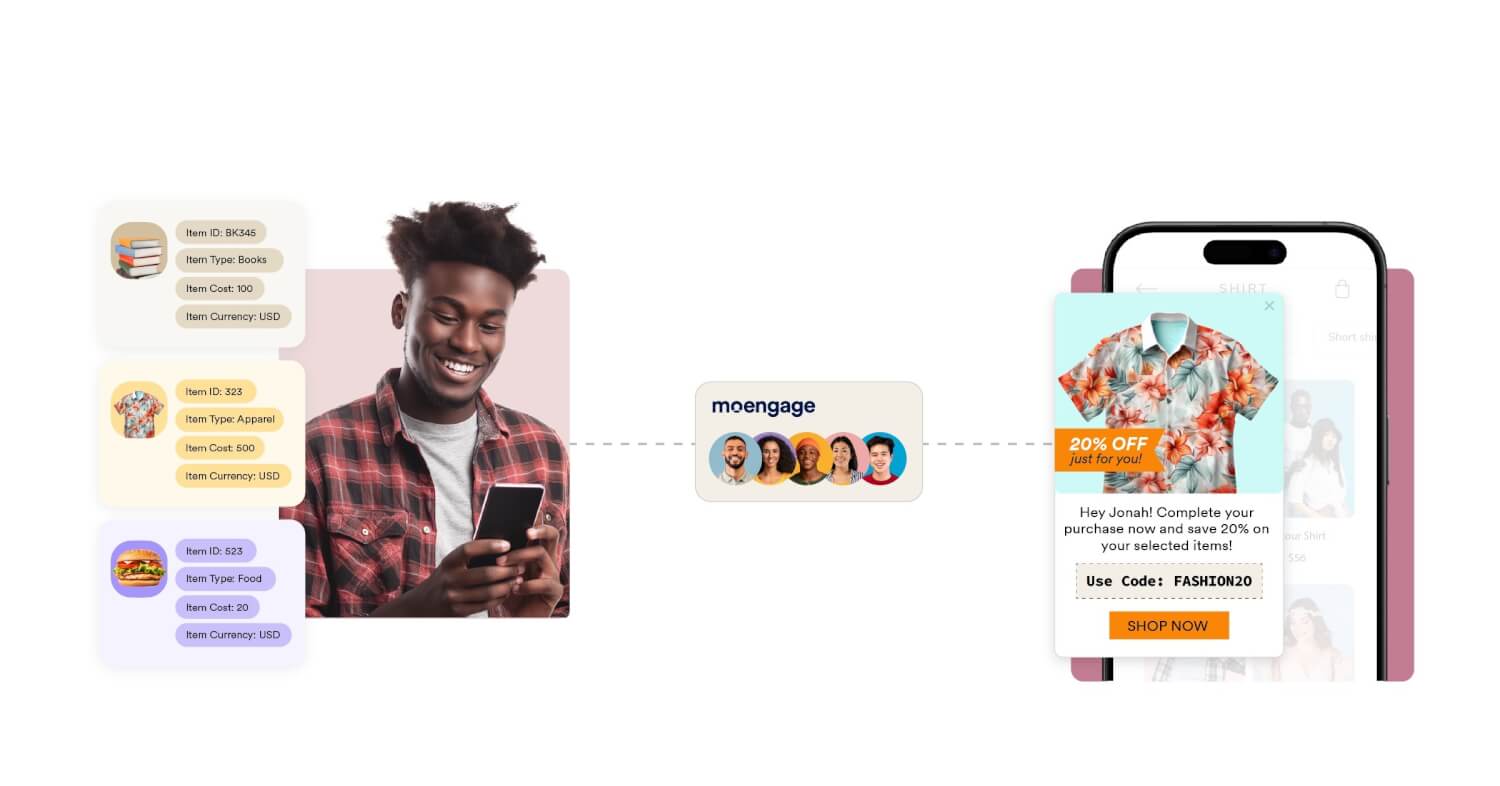
BFSI:
A bank captures customer profiles and account details as ‘Object’ data. It may create a targeted audience of customers with active loans over $50,000 and savings balances under $10,000 and offer targeted solutions for better loan management.
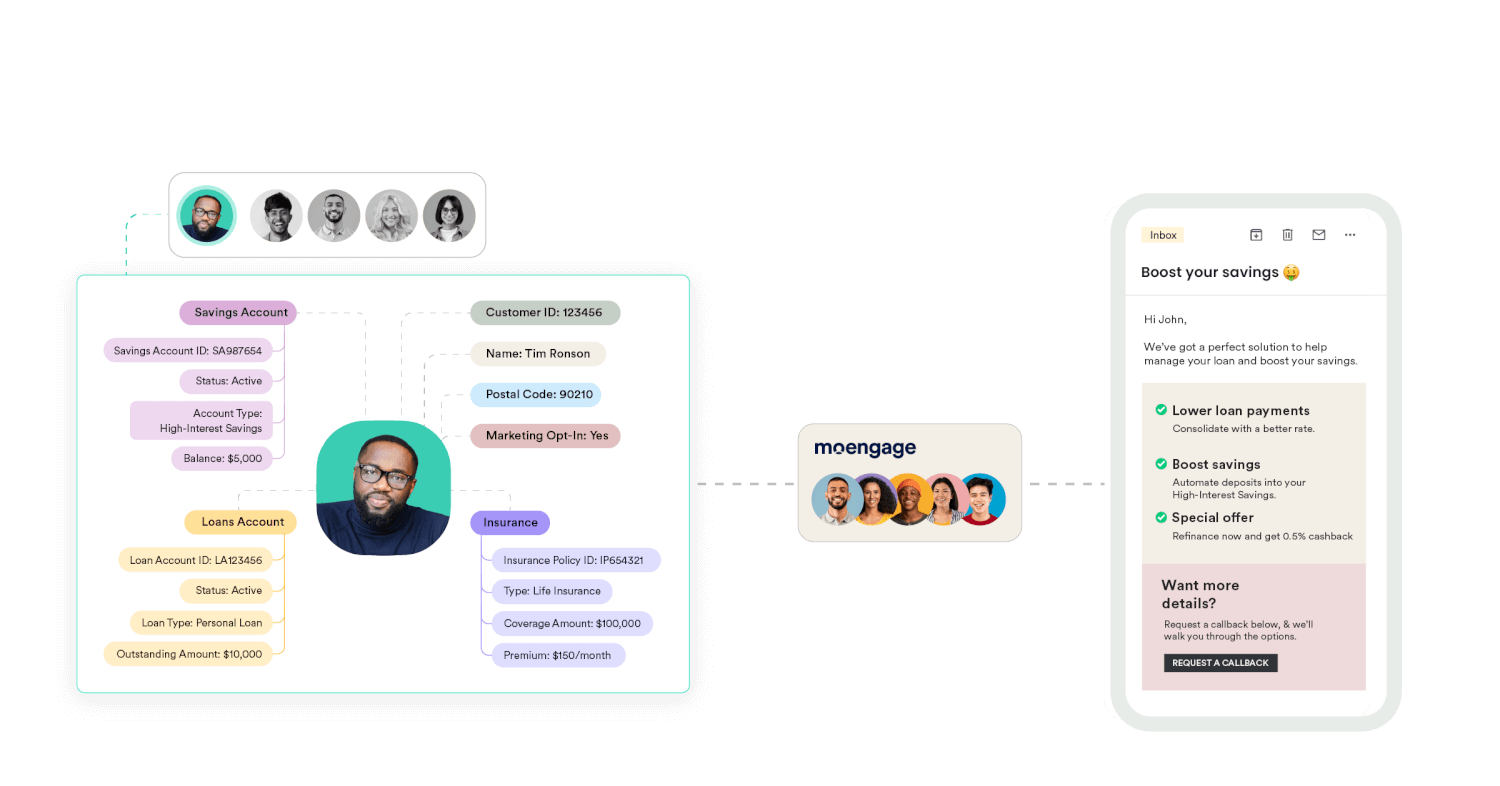
Final Thoughts
Support for Object Data is critical for brands eager to seamlessly ingest and activate their rich data. It allows for a smooth flow of information from various tools into MoEngage, enabling brands to gain a unified view of customer data that enhances understanding and insights. Moreover, the easy activation of this data empowers brands to engage their customers more effectively, helping them go above and beyond in delivering delightful experiences.
Feel free to set up a quick demo if you want to get started or learn how to leverage ‘Object’ data on the MoEngage platform.
















